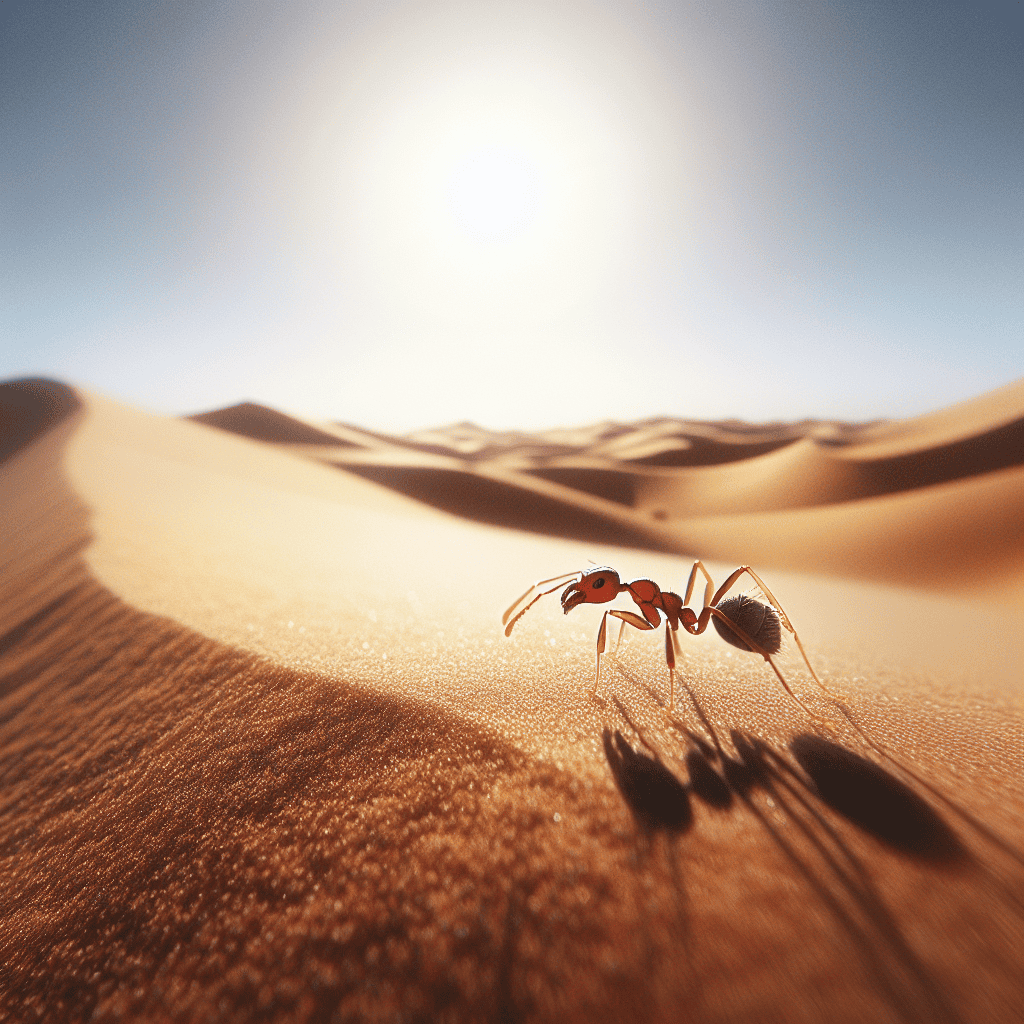Sahara Desert Ant: A Marvel of Heat-Resilient Adaptation
The Sahara Desert Ant, scientifically known as Cataglyphis bicolor, is not your average insect. This remarkable creature thrives in one of the harshest environments on Earth, the Sahara Desert, where temperatures can soar to an astonishing 70°C (158°F). Despite such extremes, these ants have mastered the art of survival, relying on their unparalleled heat resistance and extraordinary navigation skills. In this blog post, we’ll delve into the fascinating world of the Sahara Desert Ant, exploring its unique adaptations, behavior, and its critical role in nature’s ecosystem.
—
Adaptations for Desert Survival
The Sahara Desert Ant is an evolutionary genius, possessing unique adaptations that allow it to endure the unforgiving desert climate. Below are some of the adaptations that make it a master of survival in scorching temperatures:
- High Heat Tolerance: These ants can withstand temperatures of up to 55°C (131°F) where most animals would succumb to heat exhaustion. Specialized proteins in their bodies ensure that their cells remain functional even under such stress.
- Thermal Insulation: The shiny, silvery coating on their bodies reflects sunlight, reducing heat absorption. This natural “sun shield” allows them to forage during the hottest part of the day when predators are least active.
- Efficient Water Conservation: Water is a scarce resource in the desert, and Sahara Desert Ants have evolved to survive on minimal moisture. They derive hydration from the food they consume, particularly scavenged materials.
- Long Legs: Their long legs keep them elevated above the scorching sand, minimizing contact and reducing heat transfer from the ground to their bodies.
—
Exceptional Navigation Skills
One of the most awe-inspiring traits of the Sahara Desert Ant is its exceptional navigation ability. With the desert offering a vast, barren landscape devoid of landmarks, these ants use advanced techniques to find their way back to their nests after foraging.
Path Integration:
The ants employ a technique called path integration, which involves a combination of step-counting and sun-based navigation. By keeping track of the number of steps taken and using the position of the sun, they can calculate the shortest route back to their nest, even if the path they took was winding and irregular.
Polarized Light Vision:
Sahara Desert Ants are equipped with special compound eyes that can detect polarized sunlight. This ability allows them to navigate even on cloudy days when the sun isn’t directly visible. Polarized light serves as a natural compass for these remarkable insects.
Memory Maps:
In addition to step-counting and polarized light, these ants create “memory maps” of their surroundings. While returning to their nest, they use visual cues like shadows or surface textures to fine-tune their navigation and avoid getting lost.
—
Foraging Habits: Masters of Efficiency
The Sahara Desert Ant’s diet primarily consists of scavenged remains of other animals that have succumbed to the desert’s extreme conditions. However, their foraging behavior is anything but simple. In fact, it is incredibly strategic:
- Speed and Precision: These ants are some of the fastest runners in the insect world, capable of speeds up to 1 meter per second. Speed is crucial for minimizing time spent in the heat and avoiding predators like lizards and birds.
- Daylight Foraging: Unlike many desert-dwelling creatures that are nocturnal, Sahara Desert Ants forage during the day, capitalizing on their heat resilience to outlast predators and competitors.
- Short Foraging Trips: They keep their excursions short and efficient, ensuring that they can locate food and return to the nest quickly before overheating or losing their way.
—
The Sahara Desert Ant’s Role in the Ecosystem
Though they are small, Sahara Desert Ants play a significant role in the desert ecosystem. Here’s how:
- Scavenger Duties: These ants are nature’s cleanup crew, scavenging and recycling organic matter. This helps maintain the delicate balance of the desert ecosystem.
- Maintaining Biodiversity: Their interaction with other species, such as lizards and small mammals, influences the desert food chain and promotes biodiversity.
- Soil Aeration: By burrowing and building nests, Sahara Desert Ants help aerate the soil, which is crucial for desert plants’ survival.
—
Lessons Humans Can Learn from Sahara Desert Ants
The resilience and efficiency of Sahara Desert Ants have inspired researchers across various fields. Here are some ways these heat-resilient navigators are influencing human innovation:
- Robotics Navigation Systems: Scientists have studied the ants’ navigation skills to improve algorithms for robotic navigation in challenging terrains, including deserts and extraterrestrial landscapes.
- Thermal Insulation Technology: The ants’ ability to reflect sunlight has inspired advancements in thermal coatings for buildings and clothing, particularly for people living in arid regions.
- Survival Strategies: Their water conservation techniques provide insights into sustainable living in water-scarce environments.
—
Conclusion
The Sahara Desert Ant is a shining example of nature’s ingenuity. Its adaptations to extreme heat, unparalleled navigation skills, and ecological contributions make it a marvel of evolution. As we continue to face environmental challenges in the form of climate change and resource scarcity, the Sahara Desert Ant serves as a beacon of inspiration. By understanding and learning from these heat-resilient desert navigators, we can innovate and adapt to a changing world, just as they have done for millions of years.
Next time you think of desert life, don’t just picture sand dunes and cacti—consider the remarkable Sahara Desert Ant, a true testament to nature’s resilience and adaptability.
“`


